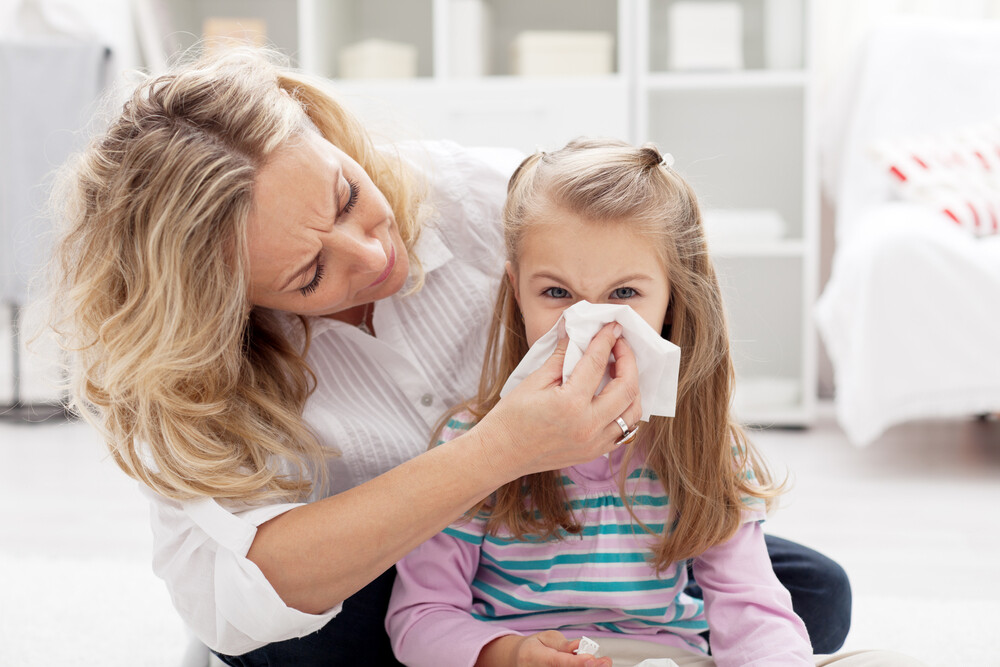The nose is full, your child can hardly breathe, but the snorting just won’t work? Then we have some great tricks for you to learn how to blow your nose. The next time you take a sniff, it’s guaranteed to work.
No sooner is one cold over than the next one is already at the door. In the cold season, daycare centre children in particular catch one cold after the next. This is exhausting for everyone involved. Especially when blowing your nose with the little ones doesn’t work properly yet.
Some children find it difficult to put the snot in the handkerchief. It is not so easy if you have never done it before! But how do parents explain the difference between pulling up, blowing and real snorting? The solution: Practice, practice, practice – best when your child doesn’t have to and is healthy.
And so that learning to blow your nose is also fun, we have a few tricks for you. This is guaranteed to get you up and running really quickly. Well then, let’s get to the tissues, ready? Come on, let’s go.
Learn to blow your nose – 4 tricks that make it work
1. Learn to blow your nose with nose soccer
All you need is a cotton ball, a smooth surface and a goal. Form a ball from the cotton wool and place it on a table or other smooth surface. Your child now holds one nostril closed and tries to blow the ball away with the other. If you want, you can also try to blow the cotton wool into a goal or across a goal line.
2. Ghost trick: Who flies the farthest?
With the ghost trick you can also learn to blow your child’s nose in a playful way. To do this, you take a piece of paper handkerchief, squeeze it together to form a little ghost and stick it a few millimetres into one nostril. Now breathe in deeply through the mouth, hold the free nostril closed and then blow the ghost out of the nose.
3. Töröööö – Learn to blow your nose with Benjamin the flower
A trumpet like the popular talking elephant? You can do it with the nose flute. The nose flute is a rather unknown, inexpensive musical instrument, which is also used in speech therapy in the simple toy version. It is pressed against the mouth below the nose and blown with the nose. The sound that is produced sounds like Benjamin the flower. Great fun for children!
4. Mirror Mirror in my hand: Learning to blow your nose with mirror trick
All you need is a small pocket mirror. Hold it under your nose and exhale through your nose. Huh? Whose mirror fogs up the most?
Pulling up is unhealthy? Not true!
A stuffy nose is annoying – the parents usually more so than the children, but from a purely medical point of view, pulling up is even healthier than snorting. The reason: when snorting, it can happen that the mucus is pressed into the paranasal sinuses. So it is not at all bad if it takes a while to learn to blow your nose.
By the way: At the age of 3 to 4 years, most kids can also blow their nose.
Cleaning baby’s nose – from nasal aspirators and saline solution
While most children are less bothered when the green caterpillars come crawling out of their nostrils, nasal breathing is existentially important for babies, because otherwise they cannot breathe when they drink, drink more poorly and more air ends up in their stomachs – and that can cause quite a bit of stomach ache.
This helps the little ones
- Nasal rinsing with saline solution: This moistens the dry mucous membranes and dilutes the secretion. Saline solution can be bought in any pharmacy.
- Nasal aspirators: If the nose is so congested that even the drops no longer help, the secretion can be carefully sucked out with the help of a nasal aspirator.
- Inhalation with saline solution: If the baby tolerates it, inhalation with saline solution helps to dilute the mucus.
- Decongestant nose drops: should be used very sparingly. However, if the nose is badly congested or an inflammation of the middle ear is added, they are available for children from infancy in the pharmacy and may be administered two to three times a day for a maximum of one week.
CAUTION: Some essential oils such as eucalyptus may cause breathing problems in children under 3 years of age. Therefore, please only use preparations that are expressly suitable for infants and toddlers.

